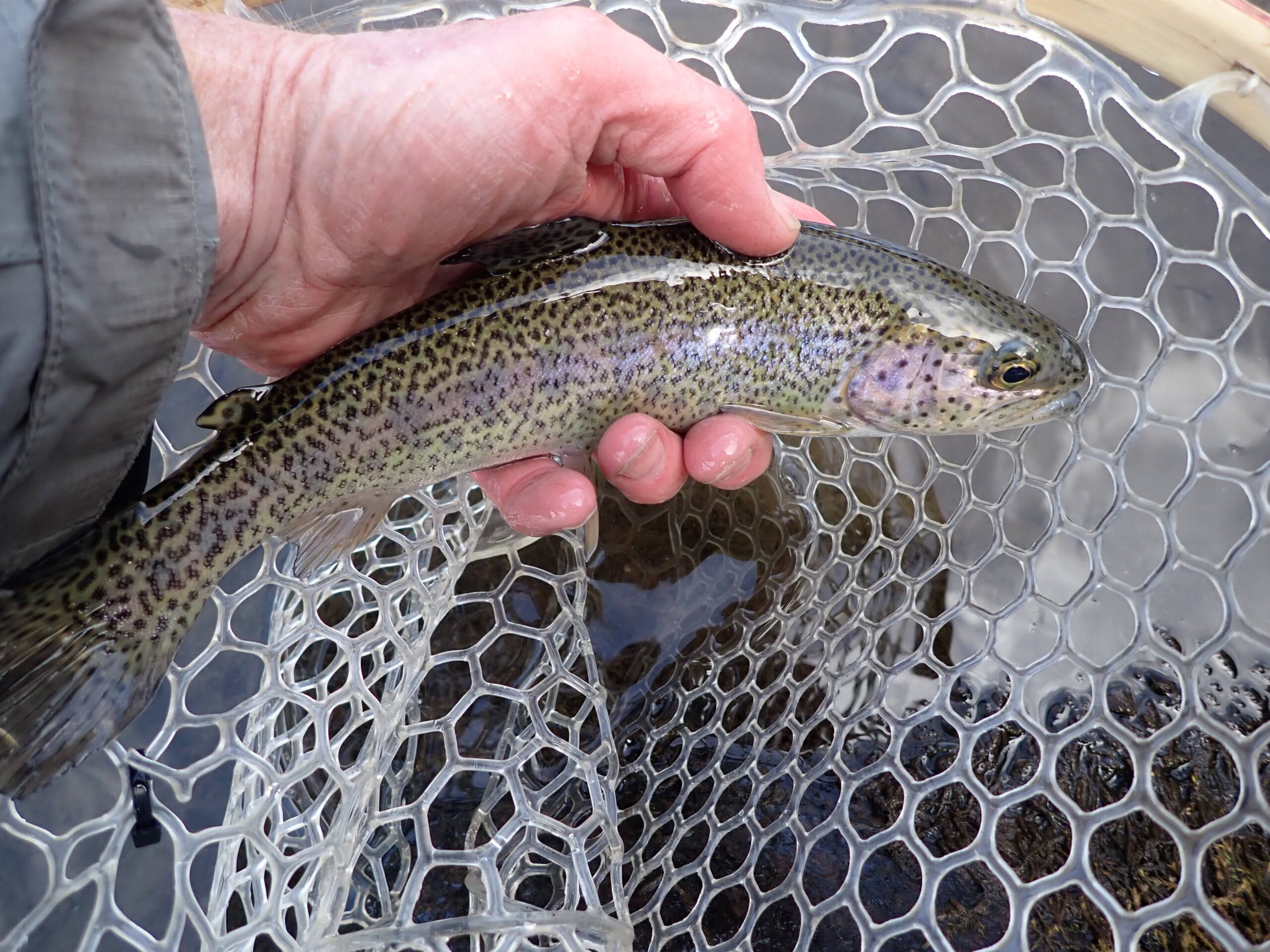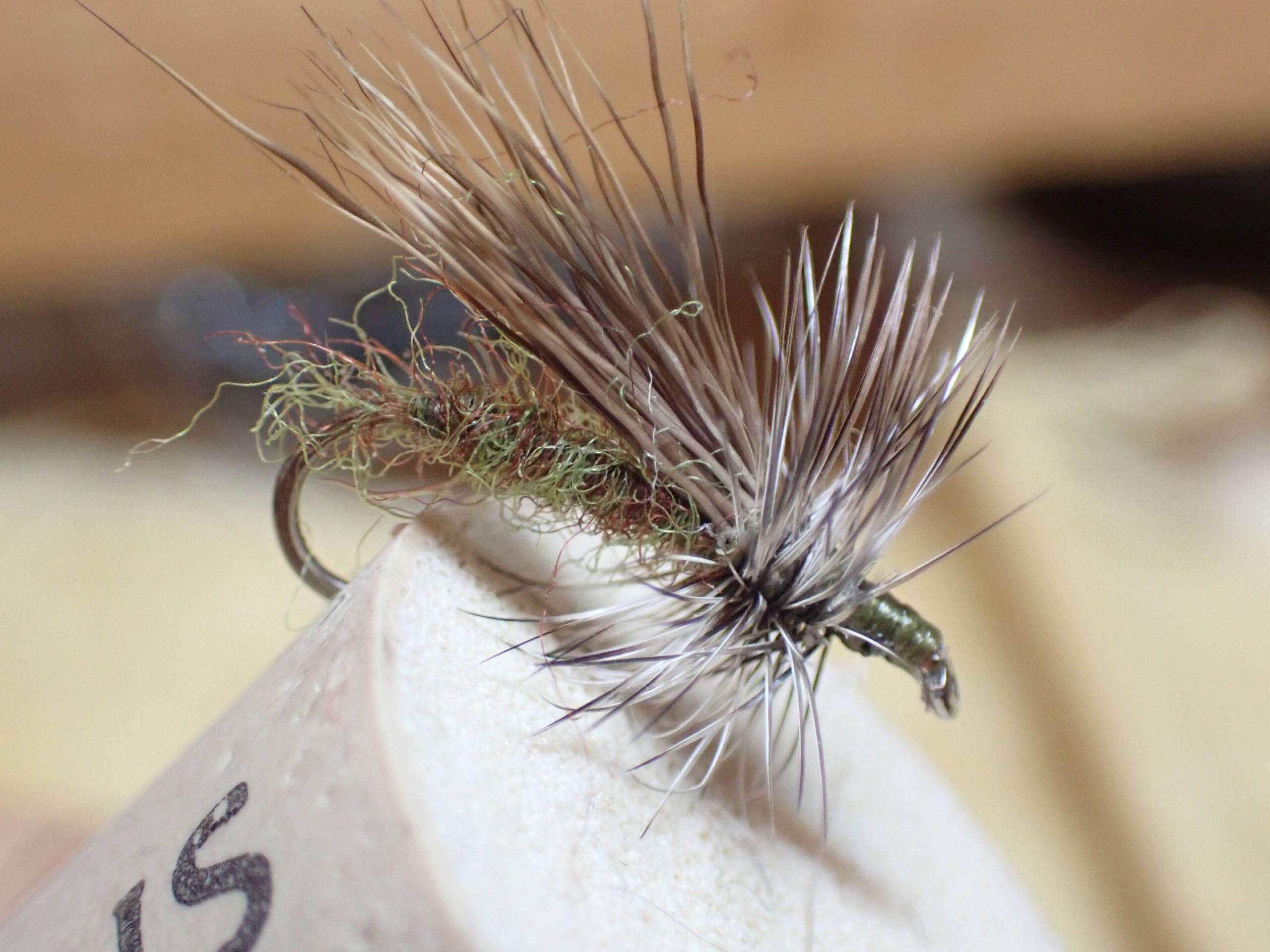Time: 11:30AM – 3:00PM
Location: West of Golden, CO
Clear Creek 02/20/2024 Photo Album
A predicted high temperature of 64 degrees in Denver, CO on February 20 was a clear invitation for this devoted fly angler to visit a stream. The one drawback to this plan was the forecast of wind gusting to fifteen miles per hour, but I decided to risk the short drive to Clear Creek in spite of this projected adversity.
The dashboard temperature upon my arrival was 51 degrees, so I suited up with my Under Armour long sleeved thermal shirt and North Face light down coat along with my billed cap with earflaps. I pulled my rain shell over my light down to act as a windbreaker, and I assembled my Loomis two piece five weight. By 11:30AM I was perched along the stream and anxiously anticipated my first casts of the new year. The creek was mostly clear in the area that I chose to fish with small residual ice shelves along the banks; however, I was never forced to venture on to unstable undercut ice.
I rigged my five weight with a size 8 yellow fat Albert, and beneath it I attached a black mini leech and size 18 crystal stone nymph. Between 11:30AM and 12:15PM, I prospected upstream and cherry-picked locations with slower current and depth. I managed to experience two temporary connections, before I paused for lunch in a sunny spot along the north bank. One of the trout that showed interest in my flies sipped the fat Albert, and I was shocked by this action, which may have contributed to my loss of the fish. At some point in the morning I swapped the crystal stone for a beadhead hares ear nymph.
After lunch I once again reconfigured my lineup, as I exchanged the mini leech for an emerald caddis pupa, and I moved the hares ear to the upper position on my dropper lines. This combination failed to interest the fish, so I paused once more, and in this instance I replaced the hares ear with a 20 incher in the top position. In a short amount of time I realized that I found a winning combination, as I landed four rainbow trout in a matter of thirty minutes. Three nabbed the 20 incher and one consumed the emerald caddis pupa. I deployed the 20 incher as a means to generate deeper drifts, and surprisingly it became the food of choice for some Clear Creek rainbow trout. The rainbows were likely holdover stockers, but I was quite pleased to land them and in so doing register my first fish on the 2024 fish counter. The largest was probably twelve inches, with the others in the ten to eleven inch range.
This sudden dose of success spurred me on, and my eagerness for more action allowed me to block out the numbness of my hands and the increasing loss of feeling in my feet. For the remainder of my time on the creek I covered quite a bit of territory, and I landed a small brown trout and a seven inch rainbow. The brown trout was a greedy little guy, as he ate the fat Albert, and the fly fell out of the rainbow’s mouth, so I was unable to determine the object of its hunger. During this time period I endured another pair of temporary connections.
 A Brown Trout Joins the Catch List
A Brown Trout Joins the Catch List
By 3:00PM I approached a bridge, and this offered an easy exit, so I grabbed the opportunity to transform my feet from frozen stumps into feeling digits. Tuesday, February 20 was a respectable start to my 2024 fly fishing season. I landed six trout and interacted with four more in three hours of fishing. The wind gusted periodically, but I paused during the worst of it. The most productive water was the seams, where fast deep runs sliced through deep pools to create a shelf pool. The trout apparently rested in the relatively low velocity depths and picked off food items, as morsels tumbled by. Landing fish in February was a noteworthy event for this fair weather angler, and weather will dictate my next fly fishing outing.
Fish Landed: 6

 Near the Start
Near the Start First Fish of 2024
First Fish of 2024 Twenty Incher
Twenty Incher Largest on the Day
Largest on the Day Source of a Trout
Source of a Trout




















